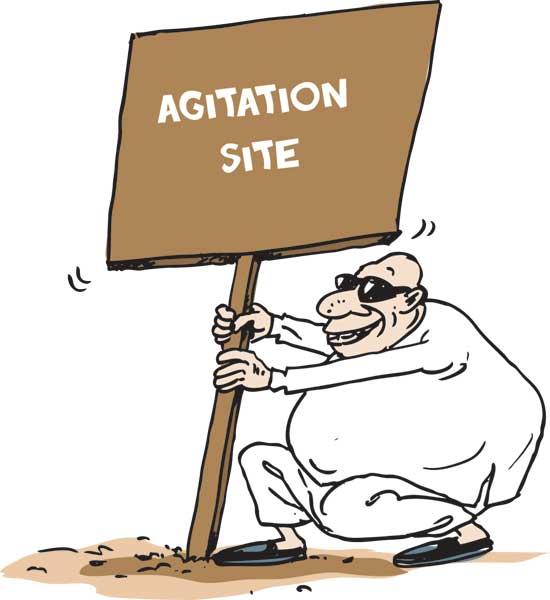Reply To:
Name - Reply Comment
The decision taken by the Sri Lanka Police and the Ministry of Defence to allocate an area for protesters to agitate in Colombo seems timely and a great need of the present times. 
We have seen how pedestrians and vehicle drivers are inconvenienced when protesters agitate on the road. Some of these agitations are organised without prior warning; hence those out on the street on office errands and parents visiting schools to pick up children are greatly inconvenienced.
But much of that could be a thing in the past after the authorities allocated an area close to Galle Face Green for grieved parties to agitate. This place was made available to the public from February 5 (Wednesday).
Sri Lanka has had a history of workers agitating when their paymasters or the country’s lawmakers either ‘throttle’ them by underpaying them or imposing laws which restrict them.
The country’s history shows how the initial agitations were carried out by blue collar workers who were engaged in businesses like laundries, cigar industry, meat shops, boat service, bicycle shops or as cart ridders. There are also records of labourers employed by the Royal Engineers’ Department agitating against salary revisions and changed working hours as far back as 1897. There was an agitation by cart riders in 1906 which eventually forced the British rulers in Ceylon to intervene.
In recent years the most prominent strikes and agitations have been carried out by university undergraduates, teachers and workers unions. Things have often got out of hand when undergrads take to the road in protest.
The allocating of a place for such activity is commendable. This shows the regime is not apposed to agitations by workers and even students. One key feature in the guideline for maintaining Human Rights is allowing citizens the freedom of expression and thought. It was heartening to hear recently that President Gotabaya Rajapaksa had instructed the security forces to allow protesting undergrads to enter the Presidential Secretariate. The purpose was to invite the protesters for talks rather than restrict and punish them. However before that arrangement was made the agitations by protesters had caused severe traffic congestion on the Galle Road.
This accommodating mentality is a welcome change from the earlier stance taken by the Mahinda Rajapaksa regime which simply quelled protests by using the force of security personnel and firearms.
We remember the horrifying incidents during the past Rajapaksa regime when people who were demanding drinkable water in Rathupaswela, in 2013, were attacked; which resulted in some people being killed. There was also the incident in Chillaw, in 2012, which featured fishermen who were agitating against a fuel hike. They were assaulted and one striker was killed. Then in 2011 a peaceful protest held by employees of the Free Trade Zone (FTZ) was quelled. FTZ employee Roshan Chanka was killed.
There have been occasions in the past where the police have obtained court orders to stop agitations from taking place. This is not democracy and clearly violates a right of people because such actions restrict the freedom of expression.
The news of a place set aside for agitations has the word positive written all over it. But it also at the same time makes people be cautious because the authorities warn that action would be taken against protesters if their actions inconvenienced the public.
Coming back to the agitation carried out by cart riders in 1906 it led to a huge gathering of protesters at Queen’s Street in Colombo. The number of carts used for transportation at that time was around 17,000; which suggests that the protesters arrived at the place of protest in large numbers. That strike produced the results and agitators won their demands with the backing of the state and also the media, largely comprising newspapers.
The present regime seems to have understood the mindset of agitators and how to handle them. Would the allocating of a place to agitate and the government willing to extend an arm of friendship to protesters put the state in a position where it’ll make protesters eat out of it hands in the future?